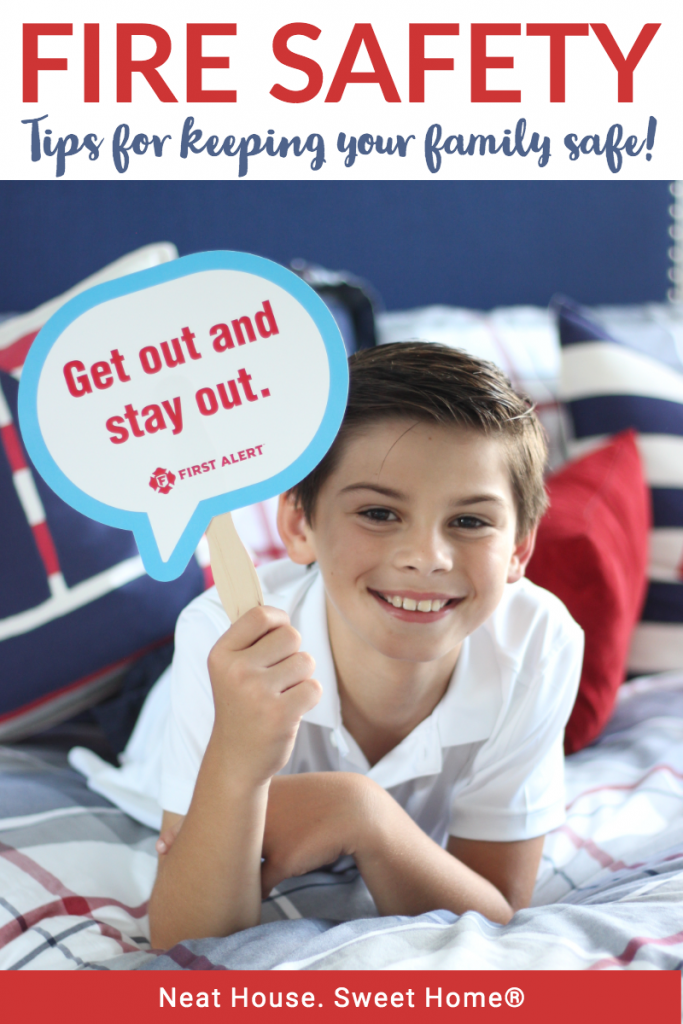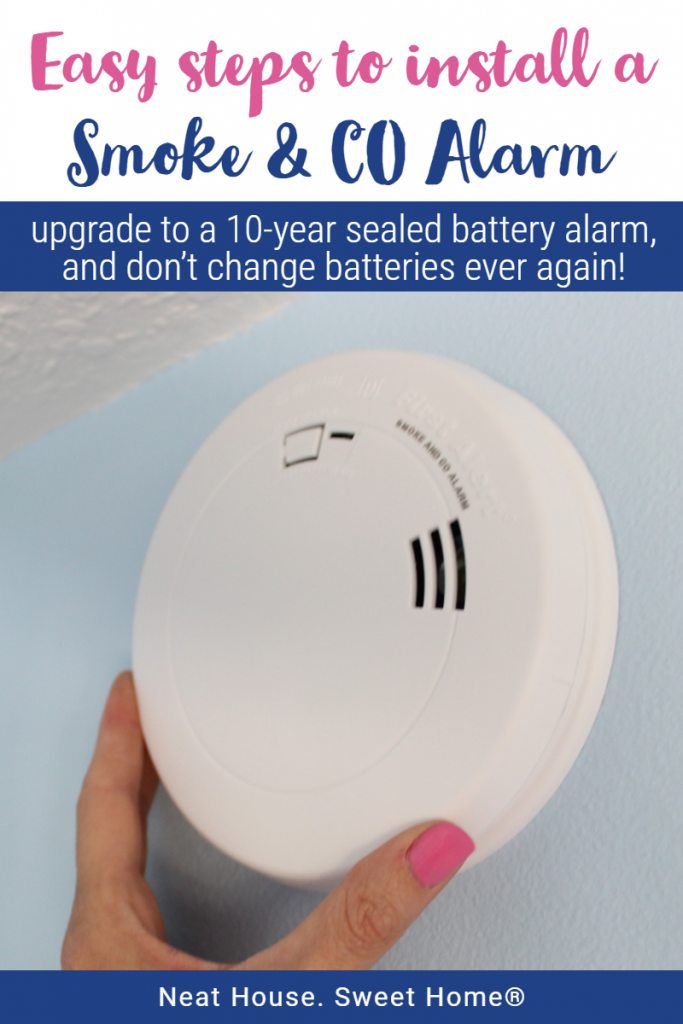Fire Safety At Home With First Alert
Thank you First Alert for sponsoring this post. Help protect your home and family with voice and location alarms from First Alert!
Fire prevention and fire safety are essential topics that -unfortunately- most of us fail to address in our own homes. I am personally guilty of not bringing up the importance of having fire safety measures and a home evacuation plan in case of a fire until today.
Just a couple of weeks ago, the world watched in horror the stunning Notre Dame Cathedral go up in flames. While several factors can -and will- start a fire in any building (house, school, church, factory, etc.), we can always control two things: preparedness and evacuation.

Every month, our son practices an egress fire drill at school. The idea of an Elementary school on fire makes my heart race, but knowing that our son knows the plan, and the evacuation route, puts my mind a bit more at ease.
All these events, made me ponder several questions:
- Do we talk about fire safety at home?
- What if a fire starts at our house?
- Are our smoke alarms in good working order?
- Do we have a home evacuation plan in place?
Let’s answer those questions!
First Things First With First Alert
Try saying that 3 times fast!
Having a home evacuation plan and route in place sounds like a sensible thing to do. But even before thinking about planning all the steps to escape your home, you need to have those smoke detectors properly installed, and in good working order.
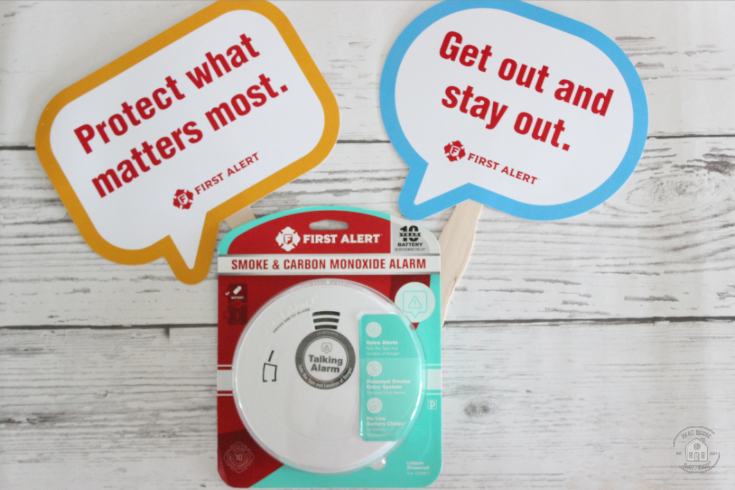
Our home’s smoke detectors are wired. This means that if one goes off, all of them will go off too. We will hear a screeching alarm sound throughout the house.
As an added fire safety measure, we decided to install a First Alert 10-Year Sealed Battery Alarm with Voice Location Technology in our son’s bedroom.
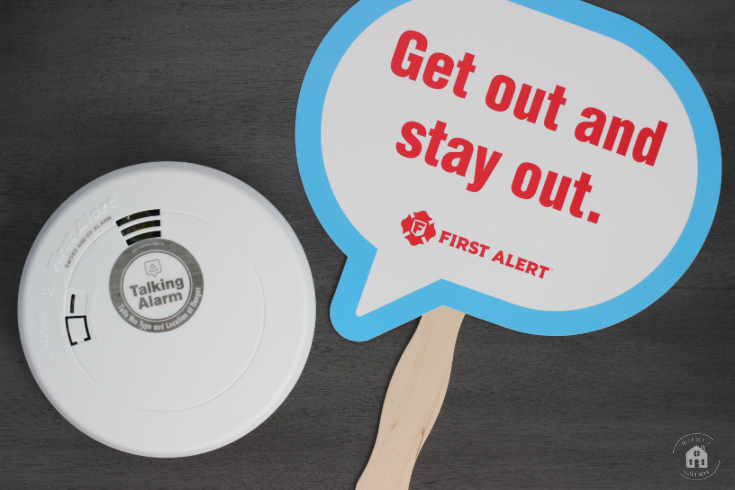
And here is why.
A recent study shows that voice technology helps children wake up if there’s an emergency in the home. A citation of the study reads:
Maternal voice alarms woke 86 to 91% of children, prompting 84 to 86% to successfully escape procedure within five minutes of the alarm’s onset. (Source).
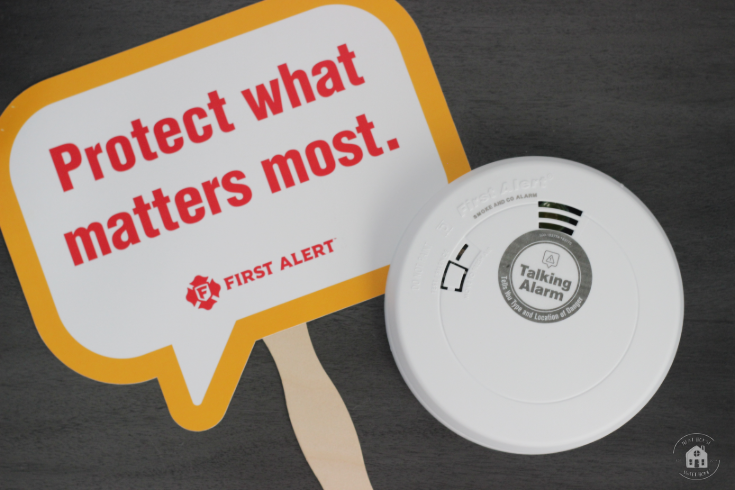
In other words, a mother’s voice is more effective and can wake up children better than an alarm. Pretty amazing, uh?. Compare those numbers to 53% of kids waking to the standard alarm and only 51% escaping!
And that is exactly what the First Alert alarm will do when detecting smoke or Carbon Monoxide in a room. A programmable talking alarm that will speak to indicate the type and location of the detected threat.
Giveaway!: First Alert 10-Year Sealed Battery Alarm with Voice Location Technology
Tips for Fire Safety At Home
It is vital to take fire safety at home seriously. In case you didn’t know, here are 2 alarming (no pun intended) stats about house fires:
– 3 of every 5 home fire deaths resulted from fires in homes with no working smoke alarms.
– A Fire Department responds to a fire every 24 seconds in America.
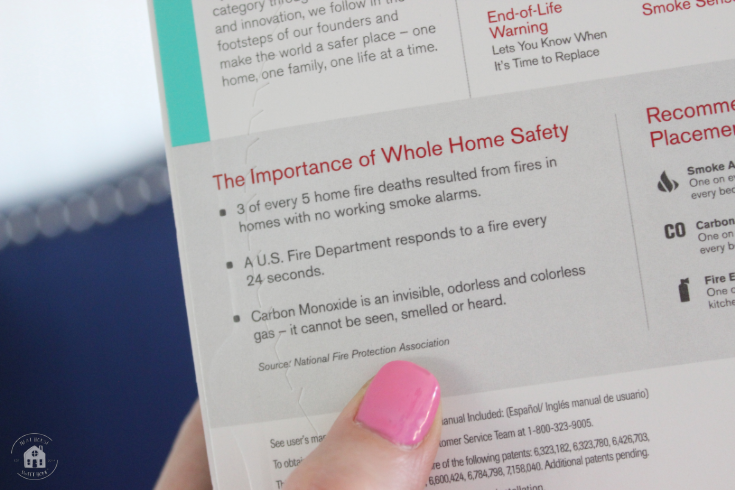
Take into consideration those stats, and follow these fire safety tips at home:
- Install smoke and carbon monoxide alarms on every level and in every bedroom of your home.
- Test smoke and carbon monoxide alarms regularly.
- Replace batteries every six months or upgrade to First Alert 10-year sealed battery alarms to eliminate the need for battery replacements for the alarm’s life.
- Alarms don’t last forever; remember to replace your alarms at least every 10 years.
- Plan and practice an escape route with your family.
Use a calendar to note the dates you should be testing the alarms and changing the batteries. A house cleaning/chores schedule can help you keep track.
It Is Not Only Fire!
There’s a silent but deadly threat we all have heard of: Carbon Monoxide poisoning.
CO is a colorless and odorless gas that is impossible to detect without an alarm. According to the Journal of the American Medical Association, CO poisoning is the number one cause of accidental poisoning in the United States and is responsible for an average of 450 deaths each year. (Source)

Carbon Monoxide is an invisible, odorless, and colorless gas. It can not be seen, smelled, or heard. In other words, you would never know if there is a CO leak in your home unless you have one of these alarms.
Thanks to First Alert we are protected from both threats: fire and CO.
Benefits of a 10-Year Alarm
Along with voice and location technology, this alarm also has a 10-year sealed battery. Hassle-free protection for a decade!
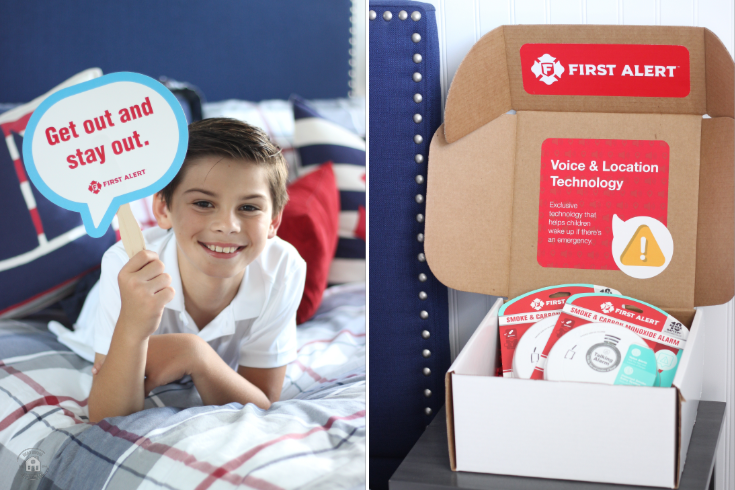
This means that you save money on battery replacements. We don’t have to worry about climbing on a ladder to change the batteries, and my favorite part: no late-night -annoying- battery chirps. Been there, done that!
first alert alarm installation
Installing the First Alert 10-Year Sealed Battery Alarm with Voice Location Technology is very simple. All you need is a ladder, a pencil, a drill, and a screwdriver. The installation hardware is included with the alarm.
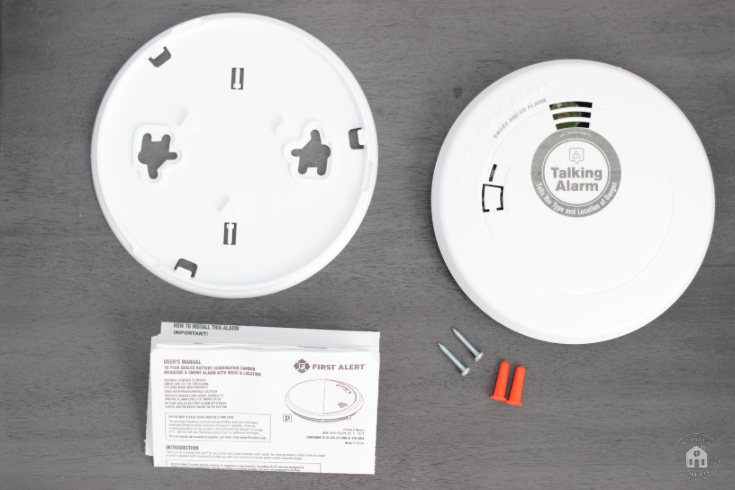
First, choose the alarm’s location following these four important guidelines:
- Do not install a smoke alarm in the kitchen
- Alarm should be installed on the ceiling.
- If installed on a wall, it should be no further than 12 inches from the ceiling.
- The alarm should not be installed too close to a light or light fixture.
We chose to install it on a wall, by the entrance of the bedroom. I installed it right under the ceiling line.
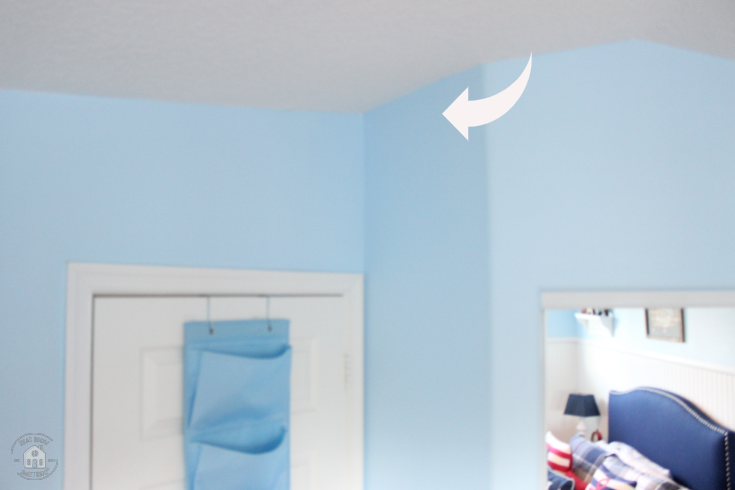
Once you have chosen the alarm’s location, place the mounting bracket so the universal mounting holes are aligned at the 9:00 and 3:00 positions.
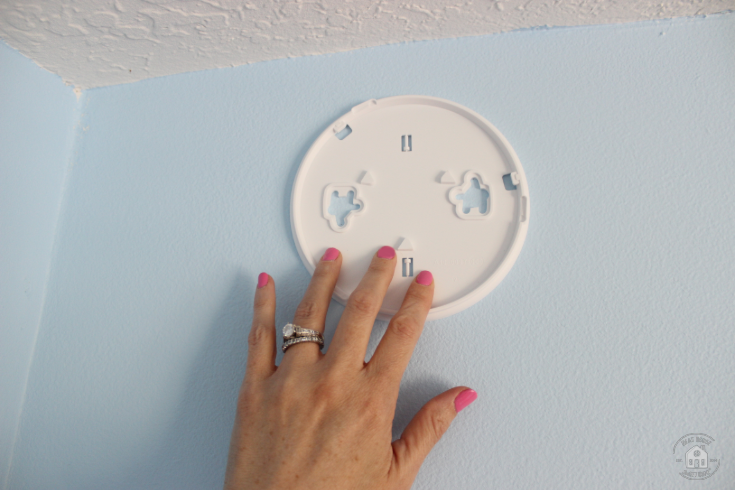
Use a pencil to mark the two points where you will drill. The points should be opposite from each other.
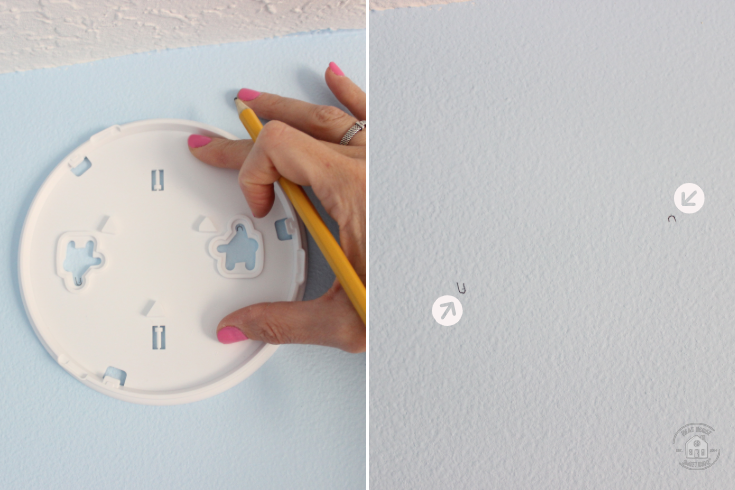
Insert a 3/6″ drill bit, and drill the holes.
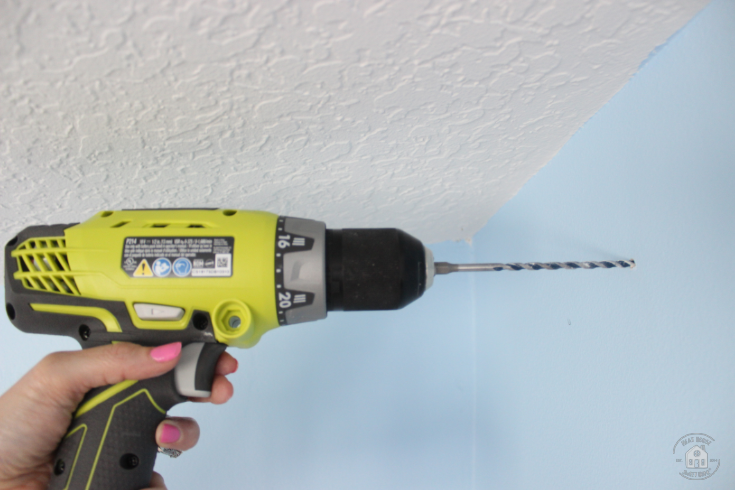
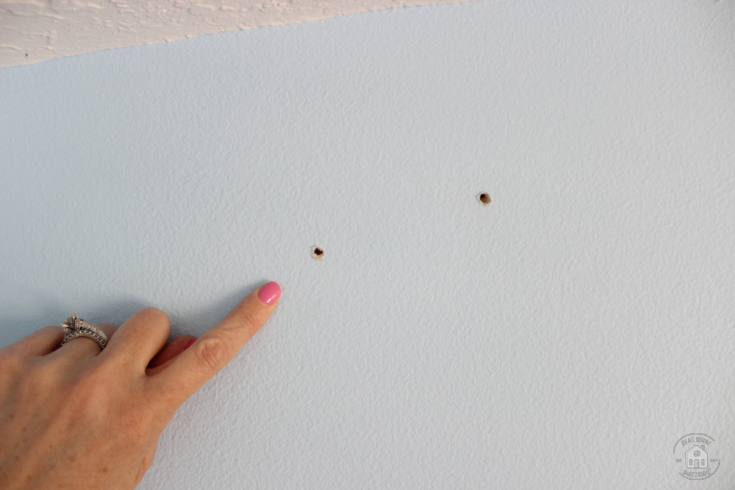
Insert the supplied plastic screw anchors (mollies) in the holes. Tap them gently with a hammer until they’re flushed with the wall or ceiling
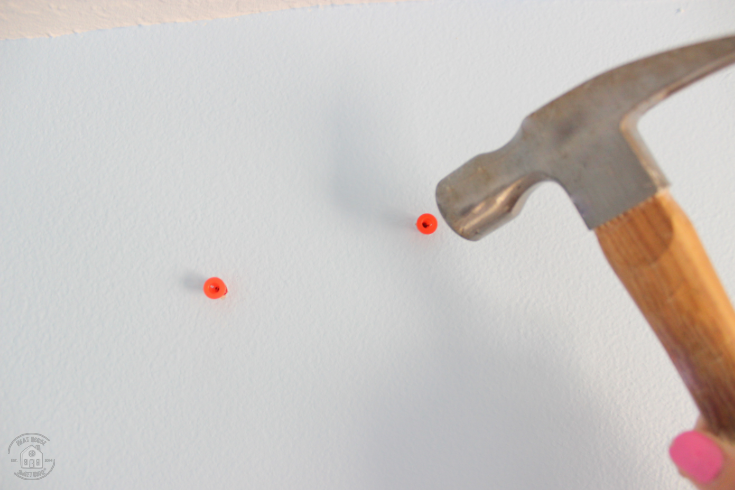
Install the screws in the screw anchors but do not tighten completely. You can do this with a manual Phillips screwdriver. I changed the bit in my power drill.
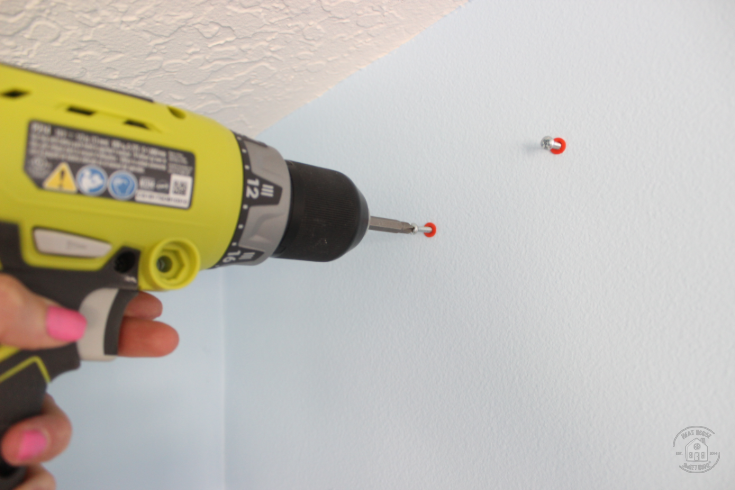
The reason why you don’t want to tighten the screws completely is so you have room to insert the mounting bracket over the screws.
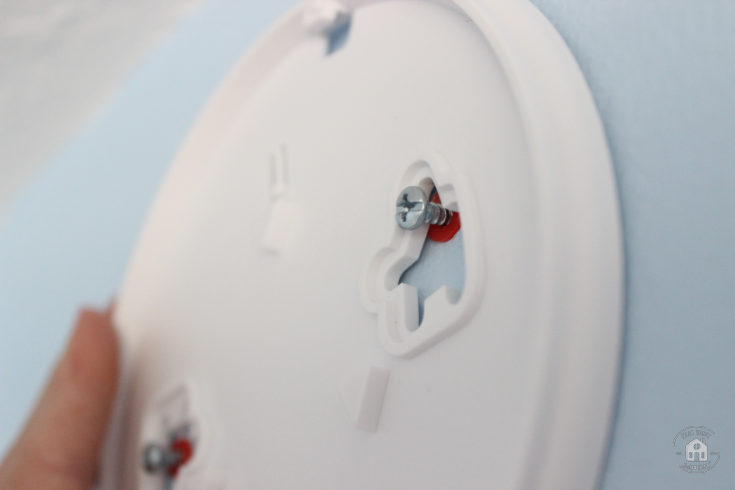
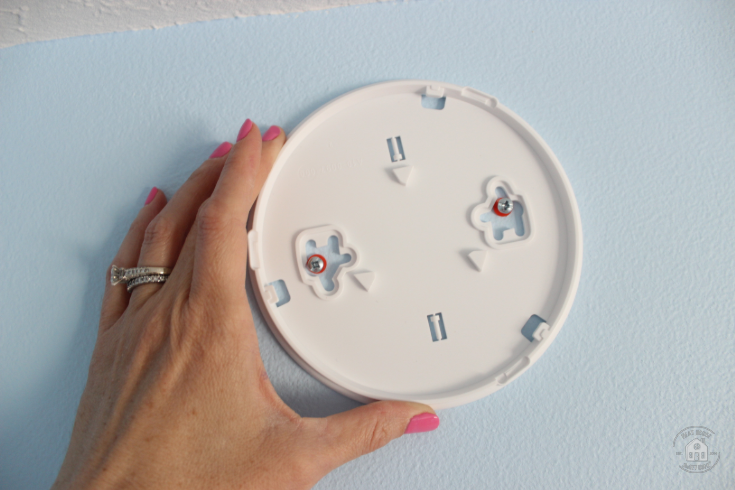
Once the mounting bracket is in place, tighten the screws just a bit more to secure the bracket, but do not over tighten.
On the back of the alarm, you should write with permanent marker the installation and the ‘replace by’ dates.

Finally, mount the smoke and CO alarm over the bracket aligning the tabs with the openings in the bracket.
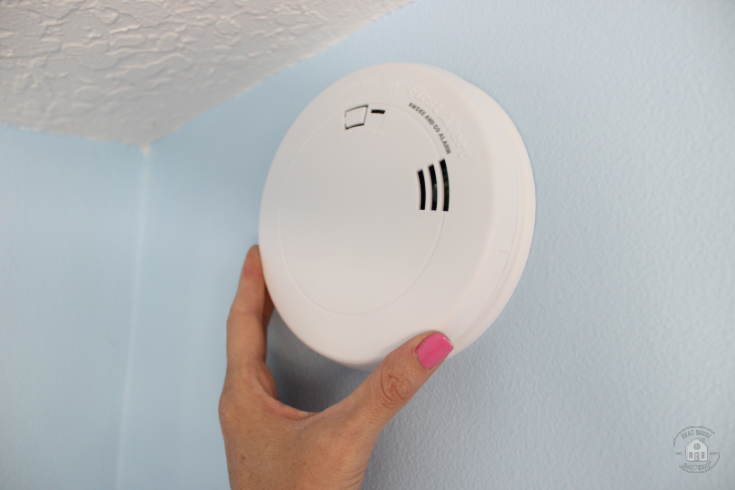
Once you mount the alarm on the bracket, it activates. Once activated, it can not be turned off.
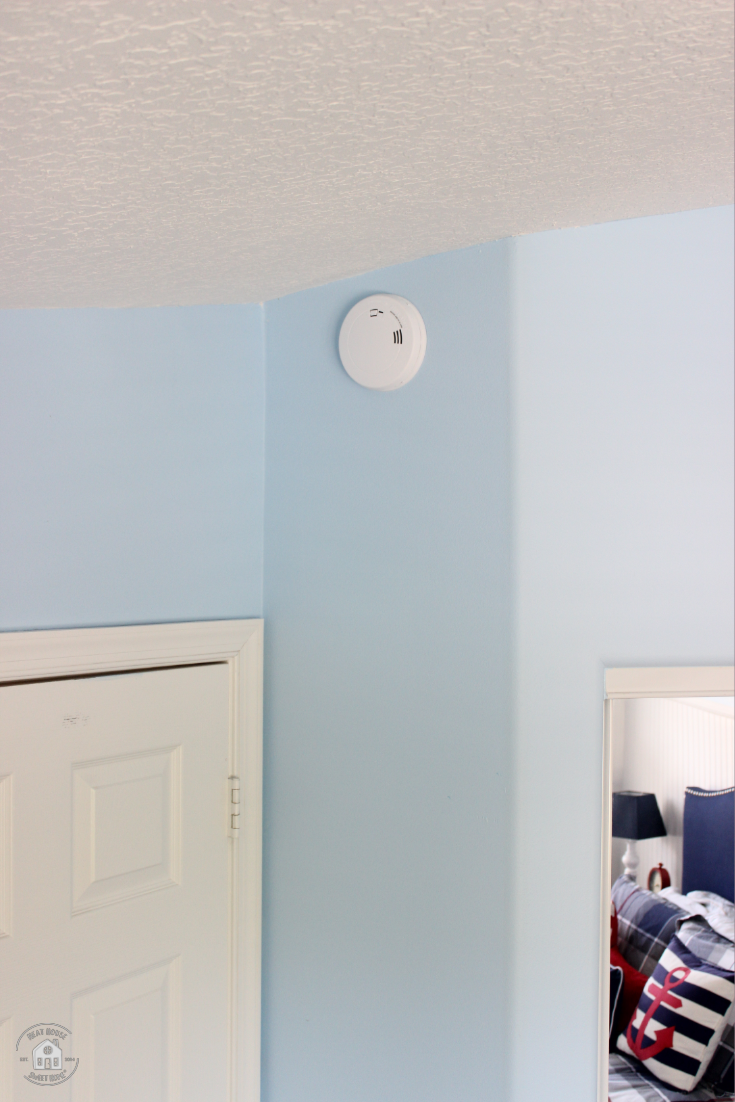
Our Home Evacuation Plan
In the event of a home safety emergency, every second counts. That’s why it’s important to plan and practice escape routes with the entire family. (Source)
We have learned a lot about fire safety at home by researching and reading all the helpful information supplied by First Alert.

We have discussed and created a home evacuation plan with smoke detectors in place and good working order. Our son has understood all the instructions on what to do if the smoke/CO alarms go off.
Here are a few things you can do to plan your emergency escape plan:
- Identify the exits out of each room in your home. There are usually two: door and windows.
- Set a dedicated meeting spot outside. It could be a tree, a mailbox, or your neighbors’ home. Always out and away from the fire.
- Every member of the family and everyone that lives in the house should know the location of all smoke and carbon monoxide alarms.
- If you have small children, draw a map of your home and plot multiple exits out of every room.
- Practice your home fire drill twice a year during the day and also at night.
- Consider adding fire extinguishers and fire escape ladders.
For more information and resources, read the National Fire Protection Association Escape Planning, and you can also download Home Escape Plan Worksheet from First Alert.
Do you have an emergency escape plan established in your home?
Enter to win a First Alert Alarm
First Alert is giving away (5) First Alert 10-Year Sealed Battery Alarm kits. (ARV $119.94). Enter now until May 9-2019, using the entry below. Winners will be randomly selected and notified on May 10.
Here are the entry options:
- Follow First Alert on Twitter
- Visit on Facebook
- Visit on Instagram
Terms & Conditions:
- Must be Age 18+
- Open to US residents only
- Only one winner per household
